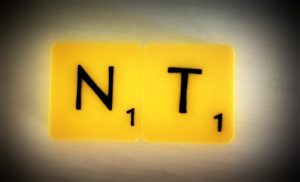Tax Code NT
 Each person in in the UK is assigned a tax code for each tax year, whether that be at the beginning of the tax year or further into it, when a tax code may be changed.
Each person in in the UK is assigned a tax code for each tax year, whether that be at the beginning of the tax year or further into it, when a tax code may be changed.
In fact you may be given different tax codes for different earnings sources.
There are various different codes – some have numbers and letters and some just consist of a letter or letters and NT is one of those.
The tax code NT means essentially that no tax is due on those earnings. The company/entity paying you will have been instructed not to deduct tax from the earnings by HMRC and they may or may not know the reason for this.
There may be different reasons for being given this tax code and if you have this tax code then it may be because of your own personal circumstances so you can always call the tax office to find out why if you are unsure.
As an example, NT can be used as a tax code for people who have non-resident status or for people whose income would be classed as self-employed and hence taxed on their own tax return. It may also be applied in some cases for Armed Forces pensions (but not all situations).

 If you have been given a tax code notice and you are wondering ‘what does tax code BR mean?’ then here is an explanation.
If you have been given a tax code notice and you are wondering ‘what does tax code BR mean?’ then here is an explanation.
 Transfer of the personal Allowance for Married Couples and Civil Partnerships
Transfer of the personal Allowance for Married Couples and Civil Partnerships Letter L
Letter L